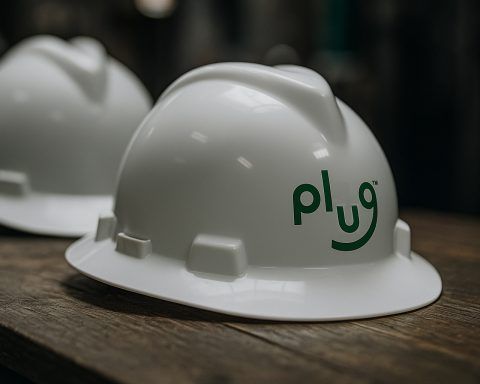- Perovskite-silicon tandem solar cells achieved about 29% efficiency on commercial-size cells, exceeding traditional silicon panels.
- Bifacial solar panels boost energy yields by up to 30% in reflective environments such as snow or sand.
- Floating solar farms can raise output by roughly 15% due to water cooling of the panels.
- Covering 10% of the world’s reservoirs with floating solar could yield about 20 TW of capacity, roughly 20 times today’s global solar capacity.
- Offshore wind turbines now reach 15–18 MW per turbine, enabling major capacity gains in deep waters.
- Floating offshore wind pilots have been launched by Norway, France, and Japan, and Britain’s next offshore leasing round will focus heavily on floating projects.
- Some wind farms are moving to wooden turbine towers to cut production emissions.
- Vertical-Axis Wind Turbines (VAWTs) are gaining attention for urban rooftop and dense-city deployments.
- Quaise Energy envisions drilling 20 km deep to access ultra-high-temperature rock by the late 2020s, vastly increasing power output per well.
- Fervo Energy demonstrated a landmark Enhanced Geothermal System project in Nevada in 2023, achieving about 3.5 MW of output.
From ultra-efficient solar panels to turbines floating on the ocean, a wave of renewable energy breakthroughs is transforming how the world generates power. In 2025, these innovations – across solar, wind, geothermal, bioenergy, and hydropower – are moving from labs and pilot projects into real-world use, marking a pivotal shift in the global energy landscape. Renewables already supply over 30% of global electricity and are expected to surpass coal as the world’s largest power source by 2025 [1]. Despite recent geopolitical and economic headwinds, the renewables industry added an extra 858 TWh of generation in 2024 – more than the annual electricity use of the UK and France combined, as one industry alliance noted [2]. This rapid progress is drawing massive investment: global clean energy spending in 2025 is projected at $2.2 trillion (twice the amount for fossil fuels) [3], with solar alone attracting nearly $450 billion [4]. “Countries are thinking about their energy security more than ever before and that means homegrown renewable power like wind and solar becomes more and more attractive,” says Euan Graham, an energy analyst [5].
Below, we delve into the latest technological advancements and commercial developments in each major renewable sector – from experimental breakthroughs to widely adopted solutions – and examine their global impact and implications for future energy policy, investment, and sustainability goals.
Solar Energy: Next-Generation Photovoltaics and Beyond
Solar power is surging ahead thanks to new technologies that make sunlight conversion more efficient, flexible, and affordable. Perovskite solar cells are a prime example – these novel crystals can be layered with silicon to create “tandem” cells that exceed the efficiency limits of traditional panels. In fact, perovskite-silicon tandem cells recently achieved about 29% efficiency on commercial-size cells [6] (versus ~21% for typical silicon panels), meaning far more power from the same area. Such gains could dramatically shrink the footprint and cost of solar farms. “If you have 100 solar panels in the field, but you can get the same power output for only 60 or 80 of them, now you’re digging less holes… using less rails… less labor to install,” explains Danielle Merfeld, Chief Technology Officer of solar manufacturer Qcells [7]. Companies worldwide are racing to scale up perovskite technology – “It’s a little bit of an arms race,” says Joseph Berry, who leads perovskite research at the U.S. National Renewable Energy Lab [8]. The remaining challenge is durability: these cells must prove they can reliably generate power for 20+ years in the field [9]. Major firms like First Solar and JinkoSolar have invested in improving perovskite stability and establishing pilot production lines [10] [11], aiming to commercialize this game-changing tech in the next few years.
At the same time, incremental innovations to conventional solar photovoltaics (PV) are being rapidly adopted.Bifacial solar panels, which capture sunlight from both front and back, are boosting energy yields by up to 30% in reflective environments like snow or sand [12]. With improved trackers and falling costs, bifacial modules have become mainstream – they constituted over 90% of new solar panels in some 2024 industry simulations [13]. Floating solar farms are another booming trend: mounting PV arrays on reservoirs and lakes saves land and even increases efficiency (water cools the panels, raising output by ~15% [14]). Asia leads in floating PV – for example, Japan has integrated solar on numerous water bodies, and China’s large floating solar project in Anhui province is providing clean power to thousands of homes [15]. Studies suggest the potential is enormous: covering just 10% of the world’s reservoirs with floating panels could yield ~20 TW of capacity (about 20× today’s global solar capacity) [16]. Other notable solar innovations include building-integrated PV (solar cells embedded in rooftops, windows, and facades) and solar thermal improvements (like more efficient molten-salt heat storage for concentrated solar power plants). These technologies, alongside rapidly declining costs, have made solar the fastest-growing source of new electricity worldwide. “Despite their intermittent nature, solar and wind are now often the cheapest source of new power generation,” notes the International Energy Agency, and continued innovation is cementing their dominance in the clean energy transition [17].
Wind Energy: Bigger Turbines, Floating Farms, and Smarter Designs
Wind power is reaching new heights – literally – as engineers build ever larger and more sophisticated turbines, including models that can be deployed in deep ocean waters. Today’s latest offshore wind turbines boast towering hub heights and blades the length of football fields, with single-turbine capacities of 15–18 MW each (capable of powering a city neighborhood from one machine). These massive turbines, including new floating offshore wind units, unlock huge wind resources over deeper seas that were previously off-limits. Countries like Norway, France, and Japan have launched floating pilot farms, and Britain’s next offshore leasing round will focus heavily on floating projects [18]. By anchoring turbines on buoyant platforms, developers can tap stronger, steadier winds far from shore – a crucial step toward scaling wind power, since most shallow seabed sites for fixed turbines are limited. Advanced materials and designs are also improving wind farm performance: for example, larger rotor diameters allow turbines to capture more energy in low winds, and new blade innovations (like serrated trailing edges for noise reduction) make giant turbines more community-friendly [19] [20]. Even the manufacturing is getting greener – some companies are now using wooden turbine towers instead of steel to cut production emissions [21], and designing fully recyclable blades to reduce waste at end-of-life. Meanwhile, Vertical-Axis Wind Turbines (VAWTs) are gaining attention for niche applications: their omni-directional design works well in turbulent or urban wind conditions where traditional horizontal turbines are less effective [22]. Though VAWTs are generally smaller-scale, they could enable wind power on building rooftops or in dense cities where space and wind direction variability are issues.
Crucially, wind technology isn’t just about brute size – it’s also getting smarter and more efficient through digital innovation. Wind operators are deploying AI algorithms and digital twins to optimize turbine performance, predict maintenance needs, and balance wind output with grid demand [23]. This reduces downtime and operating costs, making wind farms more profitable and reliable. The results of these innovations are striking: even as the average new turbine grows 60% larger than a decade ago [24], the number of turbines needed for a given project is shrinking, and community impacts can decline. A U.S. study found that a future wind farm using next-gen 2025 turbines would need 60% fewer turbines than a 2010-era farm to produce the same energy, and could be placed farther from homes – actually reducing average noise levels for neighbors by ~18% [25] [26]. “These results suggest that future turbines and plant layouts could be a win–win for communities… and the developers,” says Joseph Rand, a renewable energy researcher at Berkeley Lab, emphasizing that bigger turbines might mean less impact locally when properly sited [27]. However, he cautions that continued engagement is needed on visual and social issues as turbines grow taller [28].
In the big picture, wind power’s expansion remains vital to climate goals – but it also faces challenges that innovation and policy must tackle together. Supply chain bottlenecks and cost inflation in 2023–2024 led to some project delays and canceled contracts, especially in offshore wind [29] [30]. Industry experts urge supportive policies (like stable auctions and grid investments) to keep the wind sector on track. Even so, the global wind industry installed a record 117 GW of new capacity in 2024 (led by China and the U.S.) [31] [32], and is projected to nearly 1 TW total by 2030 [33]. As turbine technology continues to improve and costs per megawatt fall, wind energy is poised to remain a cornerstone of the renewable revolution – harnessing ever more powerful winds, onshore and off, to meet the world’s growing electricity needs.
Geothermal Energy: Tapping Earth’s Heat with Enhanced Techniques
Unlike solar and wind, geothermal energy provides steady 24/7 power – but historically it’s been limited to regions with easy-to-access steam or hot aquifers. That’s changing fast, as new drilling and reservoir engineering techniques aim to unlock “geothermal anywhere.” Enhanced Geothermal Systems (EGS) – sometimes dubbed “hot dry rock” geothermal – are a breakthrough approach that creates artificial geothermal reservoirs deep underground by injecting water into hot rock and extracting the heated fluid for power generation. In 2023, Houston-based startup Fervo Energy demonstrated a landmark EGS project in Nevada that many are calling a “historic breakthrough” for geothermal power [34]. Using horizontal drilling and controlled fracking methods adapted from the oil industry, Fervo’s pilot “Project Red” achieved a record flow rate and ~3.5 MW of output, proving that engineered geothermal can work in non-traditional locations [35] [36]. “There are hundreds of sites across the western United States that now fit our criteria that can be developed economically,” said Fervo CEO Tim Latimer, highlighting the vast potential if EGS can scale [37]. Mark McClure, a geothermal expert and CEO of ResFrac, hailed the result but noted “even as they continue to achieve technical success, [developers] will need to demonstrate the commercial model — that they can secure funding, execute, and drive down costs to achieve long-term profitability.” [38] In other words, the next step is driving EGS costs down to compete with other energy sources. Progress is underway: oil & gas players are now investing (e.g. Devon Energy put $10 million into Fervo [39]), and governments are funding R&D in advanced drilling techniques like plasma and laser drilling to reach ultra-deep super-hot zones. Companies such as Quaise Energy even envision drilling 20 km down to tap extremely high-temperature rock by the late 2020s, which could vastly increase power output per well (a supercritical geothermal resource).
Beyond EGS, conventional geothermal is also innovating and expanding. Closed-loop geothermal systems – where a working fluid circulates in a sealed pipe underground, absorbing heat without needing natural aquifers – are being piloted as a way to use geothermal energy in places with no permeable rock layers. This could allow small-scale geothermal heating/cooling in much wider areas, and startups have built demonstration projects in Canada and Germany. Meanwhile, countries rich in traditional geothermal resources are growing their capacity and sharing expertise globally. Iceland and New Zealand already get a significant share of their electricity from geothermal plants, and their success has inspired other regions. For example, in the Caribbean, the small island nation of Dominica is developing a 10 MW geothermal power plant (with help from international partners) to leverage volcanic heat for the first time [40] [41]. “This first plant will be the key to demonstrate that this can be done,” said Vince Henderson, Dominica’s energy minister, expressing excitement that geothermal could eventually supply ten times the island’s own needs and even export power to neighbors [42]. Globally, the International Energy Agency estimates about 3.7 GW of geothermal power is online today in 30 countries, but technical potential is orders of magnitude higher [43]. With EGS and other innovations, the U.S. Department of Energy projects geothermal could reach 90 GW in the U.S. alone by 2050 [44] – a massive increase that would make geothermal a major player in clean energy. Realizing this will require continued innovation in drilling (to cut costs) and supportive policies, such as renewable portfolio standards that include geothermal or risk-mitigation programs for drilling exploration. If achieved, geothermal offers a unique advantage: it can provide around-the-clock, emissions-free power and heating, complementing the variability of solar and wind and improving grid reliability in a high-renewables future.
Bioenergy: Sustainable Fuels, Biomass Power, and Carbon-Negative Solutions
Bioenergy – energy derived from organic materials – is often the unsung workhorse of renewables, spanning transportation fuels, electricity, and heating. Recent innovations in this sector focus on making bioenergy more sustainable, scalable, and even carbon-negative. A top priority is cleaning up the hardest-to-decarbonize sectors like aviation and heavy transport. Here, sustainable aviation fuel (SAF) and next-generation biofuels are key developments. SAF is a drop-in replacement for jet fuel made from renewable feedstocks such as waste oils, agricultural residues, or even algae. Dozens of airlines have run pilot flights on SAF blends, and in late 2023 Virgin Atlantic operated the world’s first 100% SAF transatlantic flight from London to New York [45] – a milestone proving that jet engines can run on pure biofuel. However, scaling up supply is a major challenge. Currently, SAF accounts for only ~0.3% of global jet fuel use [46], and IATA (the airline industry body) projects it might reach just 0.7% by 2025 at current rates [47]. “We’re not making as much progress as we’d hoped for and we’re certainly not making as much progress as we need,” warns Willie Walsh, Director General of IATA, noting the aviation sector’s 2050 net-zero goals are at risk if green fuel production doesn’t accelerate [48]. The bottleneck is the limited number of biorefineries and the high cost of feedstocks. In the U.S., new policies like the Inflation Reduction Act provide tax credits for SAF, spurring plans for numerous facilities – in fact, U.S. sustainable fuel output could jump 14× in 2024 if announced projects come online [49] [50]. Europe is also introducing SAF blending mandates for airlines. Fuel producers are exploring diverse sources: municipal solid waste, industrial off-gases, and cellulosic crops are being converted to ethanol or synthetic crude via advanced processes (e.g. LanzaTech’s fermentation of waste gases, or pyrolysis of crop residues). These “advanced biofuels” promise lower lifecycle emissions and avoid the food-vs-fuel dilemma by not using edible feedstocks. In ground transport, biofuels like renewable diesel (made from vegetable oils or grease) and biogas/biomethane are supplementing electrification, especially for trucks and buses. Many countries now blend 5–20% bioethanol into gasoline and have pilot programs for 100% biofuel buses or trucks. Going forward, achieving sustainable bioenergy at scale will require new investments and clear sustainability standards to ensure feedstocks are truly low-carbon and don’t compete with food or forests [51]. The good news is that modern bioenergy is recognized as a major component of the clean energy mix – it already accounts for about 50% of all renewable energy consumption when you include heat and transport uses, making it “the overlooked giant of renewables,” as IEA’s Fatih Birol has said [52]. With innovation, this giant can grow further without a large land footprint, by using wastes, residues, and advanced biotechnology.
Another frontier of bioenergy innovation lies in bioenergy with carbon capture and storage (BECCS) – using biomass to generate power or fuels, and then capturing the CO₂ emissions and storing them underground. Because plants absorb CO₂ as they grow, BECCS can result in net negative emissions, actively removing CO₂ from the atmosphere while producing energy. This is seen as a crucial technology in many climate models to offset emissions from sectors that are hard to eliminate. Several BECCS projects are in development. For instance, in the UK, the Drax power station (which burns wood pellets to generate 4% of the UK’s electricity) is piloting carbon capture on its biomass units. The UK government has committed £20 billion for carbon capture projects and aims to have 30 million tonnes of CO₂ storage per year by 2030 [53], some of which could come from BECCS at power plants and biofuel refineries. The EU has similar plans for 50 Mt of CO₂ storage by 2030 and is funding innovation in this arena [54]. In the US, ethanol plants in the Midwest are exploring CO₂ pipeline networks to sequester the emissions from fermenting corn into fuel. While BECCS is still in early stages, 2025 may see the first large-scale demonstrations begin construction. If successful, they could essentially turn bioenergy into a form of carbon dioxide removal – providing energy and helping to meet climate targets. Critics caution that sustainability of biomass supply and safety of CO₂ storage must be ensured; thus, rigorous accounting and regulations are needed.
Lastly, bioenergy on the small scale is also evolving: improved clean cookstoves and biogas digesters are being deployed in developing regions to replace traditional wood-burning, cutting pollution and deforestation. In rural areas, biogas systems that convert animal manure to methane are providing both cooking fuel and organic fertilizer as a byproduct. China, India, and African countries have millions of small biogas units in operation, and newer designs are boosting efficiency and affordability. Landfill gas capture is another expanding practice – instead of letting methane from waste sites vent to the air, cities are collecting it to generate electricity or upgrading it to pipeline-quality biomethane. This not only yields energy but curbs a potent greenhouse gas. The EU has set a target to produce 35 billion cubic meters of biomethane by 2030 (roughly 10% of its natural gas demand) by scaling up anaerobic digestion of wastes [55]. Such initiatives illustrate the versatility of bioenergy: from high-tech jet fuel refineries to simple village digesters, bio-based energy can take many forms. With careful management, it can provide renewable energy and positive environmental benefits, as long as it’s done in a truly sustainable way.
Hydropower and Marine Energy: Reinventing Water Power and “Water Batteries”
Hydropower is the oldest and largest source of renewable electricity, and it continues to innovate in the 21st century. Traditional hydroelectric dams are being upgraded with modern turbines and control systems to increase output and reduce ecological impacts. For example, new fish-friendly turbine designs allow migratory fish to pass through dams with higher survival rates, addressing a key environmental concern. Digital sensors and AI-based flow management now help optimize water release, generating power more efficiently while maintaining river health. While the era of giant dam-building has slowed in many countries (due to social and environmental constraints), significant projects are still coming online – such as Ethiopia’s Grand Renaissance Dam on the Nile, set to be Africa’s largest hydropower station, and large dams in China, India, and Southeast Asia contributing to energy and irrigation needs. Meanwhile, small-scale hydro is gaining traction: run-of-river turbines that don’t require big reservoirs, and micro-hydro systems that can power villages by harnessing stream flow or even water pipelines. Innovations like in-pipe hydropower (installing turbines inside municipal water or irrigation lines) are tapping energy that would otherwise be wasted in pressure drops. These systems are often low-impact and can operate continuously, complementing solar/wind in hybrid renewable systems.
One of the most exciting trends is the resurgence of pumped storage hydropower – essentially turning water reservoirs into huge “water batteries.” Pumped storage facilities pump water uphill to a reservoir when excess power is available (say, on a sunny or windy afternoon) and then release it through turbines to generate electricity when needed (like at night or during peak demand). This time-tested technology provides the long-duration storage and grid stability that intermittent renewables require. Pumped hydro is often overlooked in flashy tech discussions, but it quietly dominates energy storage: it accounts for over 94% of the world’s energy storage capacity [56], far outstripping all the lithium batteries in the world. Globally nearly 200 GW of pumped storage is installed [57], and many countries are now planning new projects after a lull in the 2000s. China has been building pumped storage at a breakneck pace (the new Fengning plant, one of the world’s largest, can store 40–60 GWh and output 3.6 GW, helping balance Beijing’s grid [58]), and places like India, Australia, and the United States are converting old mines or quarry pits into pumped storage reservoirs. In Europe, Switzerland’s alpine pumped plants act as a continental battery, and the EU launched a “Global Alliance for Pumped Storage” to facilitate more projects [59] [60]. These systems can last for decades and have minimal degradation, making them a reliable backbone for a high-renewables grid. The main hurdles are high upfront costs and long permitting times (since they involve large civil works), but innovative financing and faster approval processes are helping. As solar and wind capacity accelerates, so too is investment in these “water batteries” to ensure round-the-clock power availability.
Hydropower’s future also extends to the seas, where marine energy – including tidal and wave power – is making notable strides. Tidal energy exploits the regular rise and fall of ocean tides or powerful currents in straits. It’s highly predictable (tides come like clockwork) and could provide a dependable energy slice in coastal grids. Several tidal stream turbines, which resemble underwater wind turbines, are being tested and deployed. In Scotland’s Orkney Islands, for instance, a company called Orbital Marine Power has a 2 MW floating tidal turbine that anchors in fast currents and has been delivering electricity to the local grid reliably [61]. This device, basically a submerged twin-turbine system tethered to a floating platform, has operated through harsh North Sea conditions. The lessons from Orkney’s European Marine Energy Centre (EMEC) – where developers from around the world test prototypes – have been invaluable. France, Canada, and China are also pursuing tidal turbine farms in promising sites (like the Bay of Fundy or around island chains). Wave energy, which seeks to harvest energy from surface waves, has seen countless designs (buoys, oscillating water columns, flexible snake-like attenuators). It has proven trickier than tidal due to the randomness of waves and engineering challenges of survivability. However, progress is evident: “Our wave technology survived Atlantic storms while generating significant power,” reported CorPower Ocean after a successful pilot in Portugal [62]. The Swedish-based company’s device uses a buoy tethered to the sea floor that drives a power take-off as waves move it up and down; their Portugal test showed it could withstand rough seas and produce sizable electricity. Governments in wave-rich areas (like Australia, the UK, and the US west coast) have provided funding to jumpstart this nascent industry. Even ocean thermal energy conversion (OTEC) – using the temperature difference between warm surface water and cold deep water to run a heat engine – is being trialed in places like Hawaii and the South Pacific [63]. OTEC, if economically realized, could provide continuous power in tropical regions. While marine energy is still in the experimental to early-commercial stage, its promise is alluring: the oceans contain vast energy potential (waves alone could technically supply nearly the world’s electricity demand). As costs come down through innovation, marine renewables could become important contributors, especially for island nations and coastal communities aiming for energy independence. In fact, small islands are acting as “renewables laboratories”, piloting marine technologies alongside solar, wind, and microgrids [64] [65]. “They have to be innovative, they have to be adaptable, they have to be resilient,” says Arieta Gonelevu Rakai of IRENA, regarding island states’ approach to energy – and their experiments are offering models for larger nations [66].
Finally, integrating hydropower with other renewables is an emerging strategy. Some new projects pair floating solar panels on hydropower reservoirs – the solar can generate in daytime and the hydro can hold water for evening peaks, using the reservoir surface efficiently (as seen in large floatovoltaic installations in China, India, and Brazil). Existing dams are also being equipped with pump-turbine retrofits to add pumped storage capability, essentially expanding their role from generation to storage. This hybridization maximizes the value of hydro assets in a renewable-dominated grid.
Global Outlook: Policy, Investment, and Sustainability Implications
The rapid-fire innovations across solar, wind, geothermal, bioenergy, and hydro are propelling the world toward a cleaner energy future – but realizing their full potential will require savvy policies, sustained investment, and careful alignment with sustainability goals. Energy policy is already shifting in response to these breakthroughs. Governments are setting more ambitious renewable targets – for example, at the 2023 COP28 climate summit, world leaders pledged to triple global renewable power capacity by 2030, a goal that seemed utopian a decade ago but now appears within reach with these new technologies [67]. Achieving such targets will depend on supportive policies: stable subsidy or incentive schemes for emerging tech (like perovskites, floating wind, SAF, etc.), streamlined permitting for renewable projects and grid infrastructure, and R&D funding to continue the innovation pipeline (for next-gen solutions like super-hot geothermal, advanced batteries, green hydrogen, and beyond). Energy infrastructure and planning must also evolve – as the IEA warns, grid investments and upgrades are urgently needed to integrate variable renewables at scale [68]. This means modernizing transmission networks, deploying smart grids that can handle two-way power flows and distributed resources, and expanding cross-border interconnections to smooth out regional renewable variability. Policy can facilitate this by reducing red tape (many grid projects are delayed by lengthy approval processes [69]) and encouraging public-private partnerships to finance big infrastructure.
On the investment front, the clean energy transition is ushering in unprecedented capital flows into renewables and enabling technologies. In 2024, global investment in the energy transition exceeded $2 trillion for the first time [70], and 2025 is on track for $3.3 trillion total energy investment with two-thirds of that going to clean energy [71] [72]. Solar and wind dominate these sums currently, but as innovations like advanced geothermal, marine energy, and long-duration storage prove themselves, they too are attracting investors. The cost reductions achieved through innovation directly impact investment decisions: every time solar panels or wind turbines become cheaper and more efficient, more projects become economically viable without subsidies. However, the distribution of investment is uneven – developed economies and China command the bulk of clean energy capital, while many developing nations struggle to finance renewable deployment [73]. This is a critical gap to address, since emerging economies have huge potential and growing energy needs. International climate finance, development banks, and mechanisms like green bonds or risk guarantees can help funnel investment to where it’s needed most, ensuring the benefits of these innovations are globally shared. There’s also a growing role for corporate investment: large companies (from Big Tech to Big Oil) are pouring money into renewables and cleantech startups, either to power their operations with 100% green energy or to diversify their business models. This private sector involvement brings valuable expertise and scale – for instance, oil companies leveraging their drilling know-how for geothermal, or automakers investing in biofuels and charging infrastructure. As these trends continue, experts emphasize the importance of policy stability to keep investors confident. Sudden changes (like retroactive subsidy cuts or trade barriers on key technologies) could chill investment, whereas clear long-term signals (e.g. renewable portfolio standards, carbon pricing, or clean energy mandates) tend to spur capital into innovative projects by ensuring future demand.
From a sustainability perspective, the innovations across renewables are largely positive – enabling cleaner energy with less environmental footprint – but they must be managed responsibly to truly advance global sustainability goals. Life-cycle impacts of new technologies require attention: for example, manufacturing perovskite solar cells will need to avoid toxic lead leakage (researchers are working on lead-free perovskites or encapsulation to address this), wind turbine blades should be recycled at end of life to avoid waste, bioenergy feedstocks must be sourced without harming food security or biodiversity, and mining for battery materials or rare earths (used in wind turbines) must be improved to reduce social and ecological harm. Sustainability isn’t just about carbon – it encompasses water use, land use, community acceptance, and circular economy principles. Encouragingly, many of the 2025-era innovations are being designed with these in mind: recyclable turbine materials, agrovoltaics (combining solar with farming), wildlife-friendly solar farms, and community benefit-sharing in wind projects are emerging practices. Moreover, the rise of renewables is yielding broad health and environmental benefits by cutting air pollution from fossil fuels – already, studies show that solar and wind deployment in the past decade has averted significant particulate and SO₂/NOx emissions, preventing thousands of premature deaths annually. Reaching higher renewable penetration will amplify these public health gains (cleaner air, cleaner water, less mercury and sulfur pollution, etc.), contributing to multiple UN Sustainable Development Goals (SDGs) such as good health, clean energy, and climate action.
Another implication is the potential for energy independence and security. As noted, many nations view domestic renewables as a path to reduce reliance on imported fuels. With technologies like floating wind or enhanced geothermal, countries that lacked certain natural resources can now exploit indigenous renewable resources (like deep heat or offshore winds). This diversification enhances resilience: a more distributed, renewable-centric energy system is less prone to geopolitical supply shocks. However, it introduces new dependencies – for instance, on critical minerals for clean tech and on stable grids. Thus, a sustainability lens is prompting efforts to develop robust, local supply chains for renewable technology (such as recycling metals, developing alternatives to scarce materials, and training a skilled green workforce).
In sum, the latest innovations across all major renewable sectors are not only driving emissions cuts but are reshaping the global energy landscape in ways that touch policy, economics, and society. They have made the vision of a net-zero emissions future by mid-century much more attainable than it seemed a decade ago. To capitalize on this moment, experts call for sustained momentum: “The fast-evolving energy picture means we can’t pause – we must scale up what works and keep innovating,” urges IEA’s Fatih Birol [74]. This entails governments doubling down on clean energy commitments, investors looking at the long-term returns of climate-friendly infrastructure, and international cooperation to share technology and best practices. If handled wisely, the renewable revolution of the 2020s will not only help stabilize the climate but also spur economic growth (through new industries and jobs), improve public health, and advance energy equity by bringing power to underserved populations via decentralized renewables. The year 2025 finds the world at an inflection point: armed with groundbreaking innovations in solar, wind, geothermal, bioenergy, and hydropower, humanity can accelerate the transition from fossil fuels to a sustainable energy era. The achievements thus far – record installations, efficiency feats, and successful pilots – are cause for optimism. But the ultimate success story will be written by how we deploy these innovations at scale and navigate the challenges ahead. With smart policies and continued ingenuity, the renewable energy revolution will power not just our grids, but a cleaner and more prosperous future for all [75].
Sources: The information and quotes in this report are drawn from a range of authoritative sources, including energy industry reports, academic research, and expert commentary. Key references include Reuters news dispatches on renewable energy milestones and expert statements [76] [77] [78] [79], analyses by the International Energy Agency and other global organizations [80] [81], and domain-specific publications detailing technological advances in solar [82] [83], wind [84], geothermal [85], bioenergy [86], and hydro power [87]. These sources provide a factual basis for the innovations discussed and the quantitative figures cited, as well as direct insights from industry leaders and researchers about the significance of these developments. Each claim or statistic is linked to its original source for verification. Overall, the evidence paints a comprehensive and up-to-date picture (as of 2025) of how renewable energy technologies are evolving and influencing the global energy system.
References
1. ratedpower.com, 2. www.reuters.com, 3. www.reuters.com, 4. www.reuters.com, 5. www.reuters.com, 6. www.reuters.com, 7. www.reuters.com, 8. www.reuters.com, 9. www.reuters.com, 10. www.nasdaq.com, 11. www.nasdaq.com, 12. ratedpower.com, 13. ratedpower.com, 14. ratedpower.com, 15. ratedpower.com, 16. ratedpower.com, 17. climatesafety.info, 18. www.reuters.com, 19. www.energy.gov, 20. www.energy.gov, 21. ratedpower.com, 22. ratedpower.com, 23. ratedpower.com, 24. www.energy.gov, 25. www.energy.gov, 26. www.energy.gov, 27. www.energy.gov, 28. www.energy.gov, 29. www.reuters.com, 30. www.reuters.com, 31. strategicenergy.eu, 32. windinsider.com, 33. windinsider.com, 34. www.utilitydive.com, 35. www.utilitydive.com, 36. www.utilitydive.com, 37. www.utilitydive.com, 38. www.utilitydive.com, 39. www.utilitydive.com, 40. www.reuters.com, 41. www.reuters.com, 42. www.reuters.com, 43. www.utilitydive.com, 44. www.utilitydive.com, 45. www.reuters.com, 46. www.reuters.com, 47. www.reuters.com, 48. www.reuters.com, 49. www.reuters.com, 50. www.reuters.com, 51. e360.yale.edu, 52. www.dw.com, 53. ratedpower.com, 54. ratedpower.com, 55. www.europeanbiogas.eu, 56. www.hydropower.org, 57. www.hydropower.org, 58. www.hydropower.org, 59. www.hydropower.org, 60. www.hydropower.org, 61. www.reuters.com, 62. www.reuters.com, 63. www.reuters.com, 64. www.reuters.com, 65. www.reuters.com, 66. www.reuters.com, 67. www.reuters.com, 68. www.reuters.com, 69. www.reuters.com, 70. www.reuters.com, 71. www.reuters.com, 72. www.reuters.com, 73. www.reuters.com, 74. www.reuters.com, 75. www.reuters.com, 76. www.reuters.com, 77. www.reuters.com, 78. www.energy.gov, 79. www.utilitydive.com, 80. ratedpower.com, 81. www.reuters.com, 82. www.reuters.com, 83. ratedpower.com, 84. www.energy.gov, 85. www.utilitydive.com, 86. www.reuters.com, 87. www.hydropower.org





